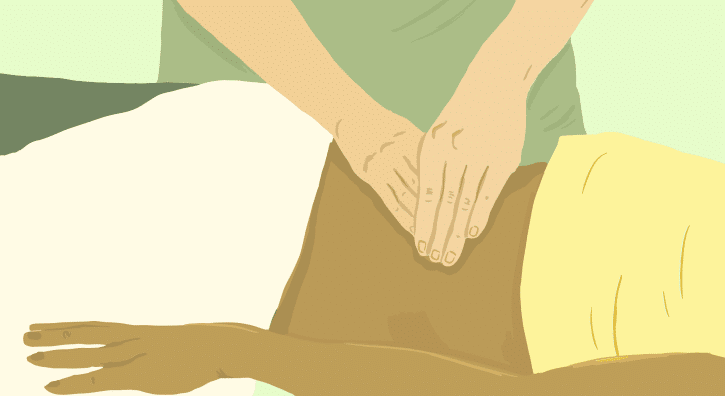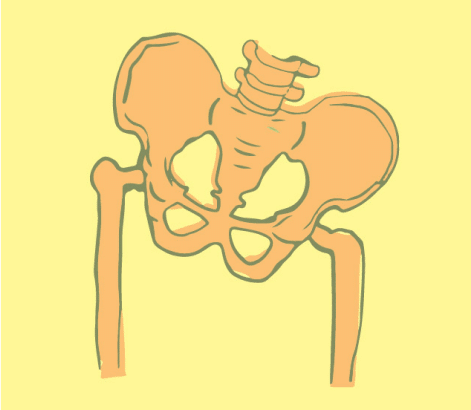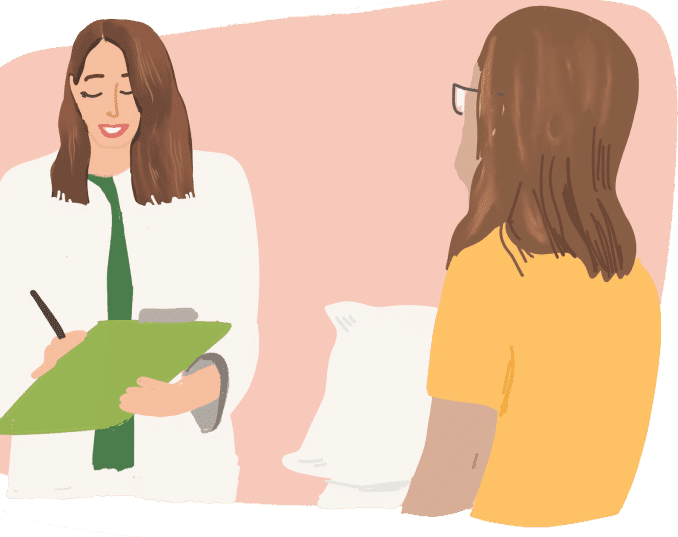

Symptoms
- The pain may come as a dull ache, intense burn, sting, or throb felt near the vulva, anus, perineal zone, or deep within the vagina
- Sexual relations can be uncomfortable, and wearing fitted clothing or sitting too long may intensify the discomfort
- Physical exertion and specific workouts can worsen symptoms for many women
- You might notice bladder troubles such as increased urgency, pain during urination, or minor leaks
- Digestive symptoms like feeling bloated, being constipated, or having erratic bowel habits can appear alongside pelvic pain
- Some women identify triggers like intercourse or tampons, while others have symptoms that appear unpredictably
- Symptoms may be constant or episodic, with some experiencing relief between flare-ups

Symptoms
- The pain may come as a dull ache, intense burn, sting, or throb felt near the vulva, anus, perineal zone, or deep within the vagina
- Sexual relations can be uncomfortable, and wearing fitted clothing or sitting too long may intensify the discomfort
- Physical exertion and specific workouts can worsen symptoms for many women
- You might notice bladder troubles such as increased urgency, pain during urination, or minor leaks
- Digestive symptoms like feeling bloated, being constipated, or having erratic bowel habits can appear alongside pelvic pain
- Some women identify triggers like intercourse or tampons, while others have symptoms that appear unpredictably
- Symptoms may be constant or episodic, with some experiencing relief between flare-ups

Associated Diagnoses
Diagnoses such as Endometriosis, Vulvodynia, Interstitial Cystitis/Painful Bladder Syndrome, Pudendal Neuralgia, Lichen Sclerosus, Lichen Planus, and Irritable Bowel Syndrome are associated with pelvic pain and pelvic floor dysfunction.


Causes of Pelvic Pain
- Chronic bladder or vaginal infections, alongside issues affecting the gastrointestinal tract, skin, or reproductive system
- Pelvic floor dysfunction is present in the majority of women suffering from chronic pelvic discomfort
- Medications like hormonal contraceptives, treatments for acne, or drugs used in managing PCOS and Endometriosis
- Surgical history involving the pelvic region, including interventions for prolapse, C-sections, or removal of reproductive organs
- Physical traumas to the pelvis, hips, or lower back structures that compromise muscle and nerve function
- Anatomical or functional imbalances such as uneven leg length, scoliosis, or instability in the sacroiliac joints
- Natural childbirth involving the vaginal canal, which can lead to significant pelvic trauma
- Menopausal transitions that impact hormone levels and tissue resilience
- Genital harm caused by cutting or other forms of physical mutilation
Causes of Pelvic Pain
- Chronic bladder or vaginal infections, alongside issues affecting the gastrointestinal tract, skin, or reproductive system
- Pelvic floor dysfunction is present in the majority of women suffering from chronic pelvic discomfort
- Medications like hormonal contraceptives, treatments for acne, or drugs used in managing PCOS and Endometriosis
- Surgical history involving the pelvic region, including interventions for prolapse, C-sections, or removal of reproductive organs
- Physical traumas to the pelvis, hips, or lower back structures that compromise muscle and nerve function
- Anatomical or functional imbalances such as uneven leg length, scoliosis, or instability in the sacroiliac joints
- Natural childbirth involving the vaginal canal, which can lead to significant pelvic trauma
- Menopausal transitions that impact hormone levels and tissue resilience
- Genital harm caused by cutting or other forms of physical mutilation

Diagnostic Challenges
Women dealing with pelvic pain often face years of confusion and trial-and-error treatment before finally learning what’s really wrong. Studies suggest it typically takes around five years to receive a correct diagnosis, and in cases involving conditions like Endometriosis, it can take as long as 11 years. This extended timeframe is due in large part to the overlapping symptoms pelvic pain shares with other common issues, such as UTIs, STIs, yeast infections, or bladder problems. Because pelvic floor dysfunction doesn’t always show up in standard diagnostic testing, many women are misdiagnosed repeatedly. The result? Prolonged suffering and treatments that simply don’t work. It’s surprisingly common for a woman to start physical and occupational therapy without any prior awareness of what the pelvic floor is or how it might be at the heart of her symptoms.
Diagnostic Challenges
Women dealing with pelvic pain often face years of confusion and trial-and-error treatment before finally learning what’s really wrong. Studies suggest it typically takes around five years to receive a correct diagnosis, and in cases involving conditions like Endometriosis, it can take as long as 11 years. This extended timeframe is due in large part to the overlapping symptoms pelvic pain shares with other common issues, such as UTIs, STIs, yeast infections, or bladder problems. Because pelvic floor dysfunction doesn’t always show up in standard diagnostic testing, many women are misdiagnosed repeatedly. The result? Prolonged suffering and treatments that simply don’t work. It’s surprisingly common for a woman to start physical and occupational therapy without any prior awareness of what the pelvic floor is or how it might be at the heart of her symptoms.
Treatment:
How We Can Help You

Women in Culver City who are dealing with unresolved pelvic pain may benefit significantly from a dedicated pelvic floor physical and occupational therapy evaluation. This is not just a routine check—it’s a thorough, personalized assessment that reviews your medical past, diagnoses, and previous treatment attempts, whether successful or not. We understand that by the time you arrive at this step, you may feel worn out from trying to find relief. That’s why your therapist will spend time examining not only your muscles and soft tissues but also nerve function, joint mechanics, and your body’s movement habits. The result is a comprehensive understanding of what’s behind your discomfort and a structured, personalized treatment plan that supports both short- and long-term healing. Therapy sessions are generally scheduled once or twice weekly for roughly 12 weeks, with a complementary home program that enhances your progress between visits. Our team also keeps the lines of communication open with your other providers to ensure your care is aligned and supportive from every direction. We’re dedicated to helping you feel like yourself again.

Treatment:
How We Can Help You
Women in Culver City who are dealing with unresolved pelvic pain may benefit significantly from a dedicated pelvic floor physical and occupational therapy evaluation. This is not just a routine check—it’s a thorough, personalized assessment that reviews your medical past, diagnoses, and previous treatment attempts, whether successful or not. We understand that by the time you arrive at this step, you may feel worn out from trying to find relief. That’s why your therapist will spend time examining not only your muscles and soft tissues but also nerve function, joint mechanics, and your body’s movement habits. The result is a comprehensive understanding of what’s behind your discomfort and a structured, personalized treatment plan that supports both short- and long-term healing. Therapy sessions are generally scheduled once or twice weekly for roughly 12 weeks, with a complementary home program that enhances your progress between visits. Our team also keeps the lines of communication open with your other providers to ensure your care is aligned and supportive from every direction. We’re dedicated to helping you feel like yourself again.
How Can We Help You?
We welcome your questions, concerns, or feedback. Please take a few minutes to fill out the form below, and be sure to provide your email so we can reply as quickly as possible. You can trust that all details shared with us will be handled with sensitivity and strict confidentiality.

Join The Newsletter. Win a copy of our book, “Pelvic Pain Explained!”
We love getting to know our website visitors. Please tell us a little bit about yourself and get the latest info via PHRC e-newsletter!
*Subscribers automatically eligible to win our book, “Pelvic Pain Explained.”
The essence of Pelvic Pain Explained lies in its honest discussion about where pelvic pain originates, the delays and confusion surrounding its diagnosis, and the complicated decisions women face in seeking care. The book also offers insight into how these struggles ripple into emotional well-being and interpersonal relationships, especially when symptoms are invisible to others.


